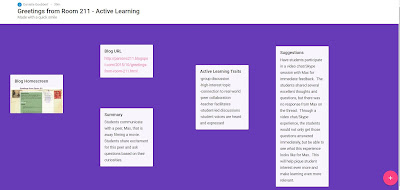We're in the 21st Century, Time to Start Teaching/Learning Like We Are!!!

I read the article titled, " 15 Characteristics of a 21st-Century Teacher ." This article was insightful on what qualities teachers that teach in the 21st century should start taking on whether they have already or not. I completely agree with all of the suggested qualities and feel that I have began the process of implementing some of them within my teacher experience as well. As I have read in this article, previous courses, and through personal professional developments, a student-centered approach to learning that includes collaboration and creativity through project-based learning is central to 21st century learning structures. This is definitely something that I agree with. Learning should be student-centered because learners are so different in regards to skill levels and interests and access to massive amounts of resources and information is at our student's fingertips; it would be a shame to see those resources that lead to engaging opportunities for our stu...









